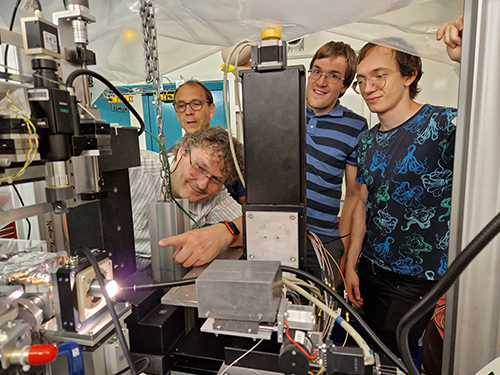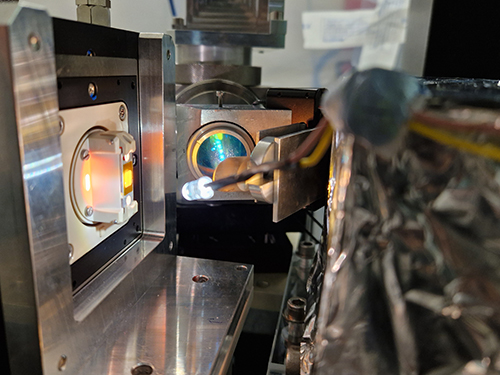- Home
- News
- General News
- #EBSstory How can...
#EBSstory How can iron in the moon and meteorites help to understand the origin of the Solar System?
23-10-2023
Using ESRF-EBS, scientists from Leibniz University Hannover are investigating the origins of the Solar System by studying samples from the moon and micrometeorites.
Meteorites are remnants of material from the early solar system. Our Earth accumulates on average 100 tons per day of these extraterrestrial samples, which largely exhibit spherical shapes. The presence of iron in them provides insights into the formation and composition of the solar system.
Equally, detecting the different forms of iron in moon samples can shed light on the geology of the moon, its history and how celestial bodies form in our solar system.
Regarding the moon, after the Apollo mission, back in the 70s scientists studied several samples and found that iron was very scarce. However, recent studies have found that iron and other metals are more abundant in certain zones in the moon, notably the darker zones, than in the Earth. This effectively disputes the hypothesis that the moon’s metal comes from the Earth’s debris after it collided with a Mars-sized planet called Theia, 4.5 billion years ago.
“Iron in the moon is a very valuable resource as it can be used to construct infrastructure and equipment, for example in the case of a potential lunar space station to carry out research”, explains Franz Renz, professor at Leibniz University Hannover (LUH) and leader of the team.
The team came to the ESRF with samples from both the moon and meteorites. They used the technique of Synchrotron Mössbauer Source to characterise the iron-rich microscopic meteorites, of a diameter of around 100 microns on average, collected from an up to 3.8-million-year-old continuous sedimentary record in the Atacama Desert in Chile. Because this desert is the oldest and driest temperate desert on Earth, it preserves the samples in optimal condition to monitor changes in flux, types and composition of extraterrestrial material over time.
This technique provides researchers with information about different mineral phases in the centre and on the edge of the micrometeorites, which can be affected differently when they enter the atmosphere. Specifically, it will identify all the iron phases present in the micrometeorites and the spatial distribution of such iron phases within the samples. The results will hopefully provide an unprecedented understanding of atmospheric processes that still cloud our perception of the origin of meteorites.
 |
 |
|
The team, with Franz Renz pointing the sample (left) and a close-up shot of the sample (right) on the beamline ID18. |
|
“The ESRF provides a set-up which is pretty much unique in the world”, says Renz. “For my research, measurements at beamline ID18 and the future ID14 are of big importance, because of the unique beam at ESRF and its spatial and energy resolution to perform Mössbauer spectroscopy on microscopic to nanoscopic terrestrial and extraterrestrial material, to even resolve single phases and its interphases”, he concludes.
Top image: Lunar samples. Credits: F. Renz.



